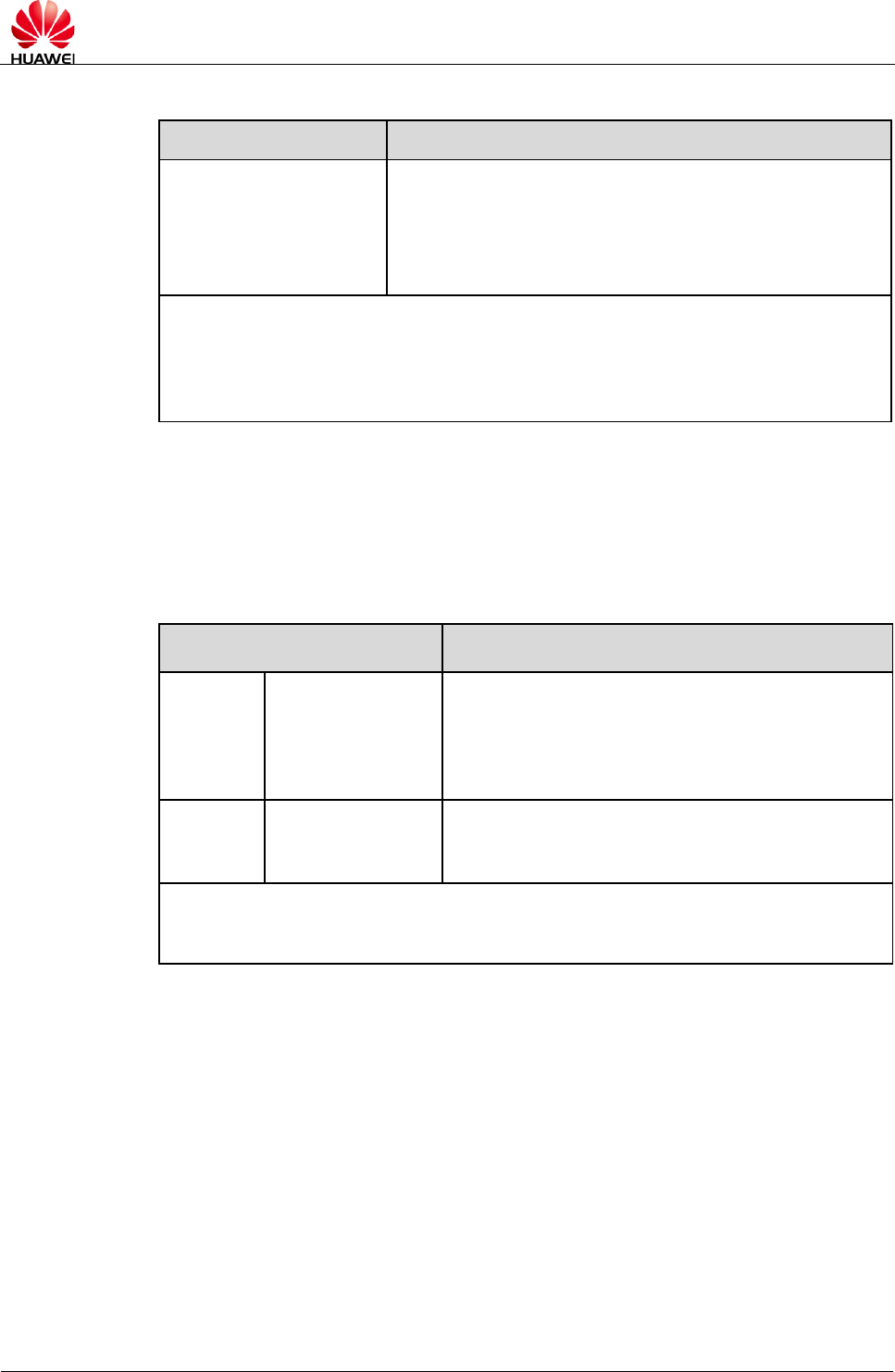
HUAWEI MC509 CDMA LGA Module
AT Command Interface Specification
Overall Description
Issue 01 (2011-08-26)
Huawei Proprietary and Confidential
Copyright © Huawei Technologies Co., Ltd.
20
Table 1-1 Format of a basic command
Command Format
Description
<command>[<number>]
In the command format, <command> indicates a single
letter (A–Z) or the & symbol plus a single letter.
In the command format, <number> indicates a decimal
number with one digit or multiple digits. The digit 0 at
the start of <number> can be ignored.
Note:
If a basic command that is allowed to contain <number> does not contain <number>, the
default value of <number> is used in the command.
If a basic command that is not allowed to contain <number> contains <number>, "ERROR"
or “+CME ERROR : operation not allowed” is returned.
An S register command consists of the letter S and a decimal number, which is called
the parameter number of the register. An S register command can be in the format of
read command and set command. Table 1-2 describes the format of an S register
command.
Table 1-2 Format of an S register command
Command Format
Description
Read
command
S<parameter
number>?
Returns the ASCII code of characters currently
saved in the S register. The ASCII code is
expressed by a 3-digit decimal number. The digit
0 is added in the front of the number in case of
insufficient digits.
Set
command
S<parameter
number>=<value>
Replaces the characters saved in the S register
with the characters related to the value of
<value>.
Note:
If the parameter number of the register is not identified, this indicates that the command does
not exist. In this case, ERROR is returned.
All extended commands start with the + symbol. Vendor-defined commands start with
a special symbol such as ^ and %. In this document, all vendor-defined commands
start with the ^ symbol. Extended and vendor-defined commands are further
categorized into action commands and parameter commands. Table 1-3 describes
the types and formats of extended and vendor-defined commands.
An action command refers to a command that performs a specific action in addition
to interacting with the local parameters of the MS, including AT+CPBR and
AT^HCMGS. An action command may or may not contain parameters. Action
commands are categorized into execution (write) command and test command. A
parameter command refers to a command that interacts with the local parameters of
the MT only, certain of which may affect the execution of action commands.
Parameter commands are categorized into set command, read command, and test
command.


















